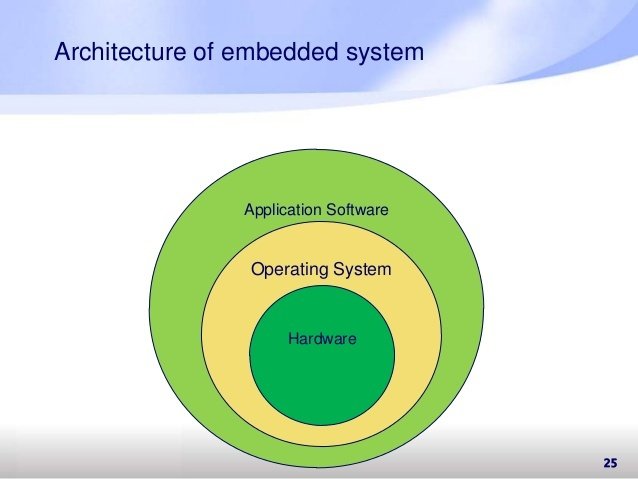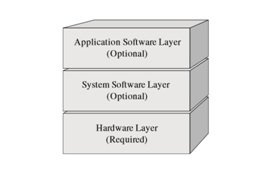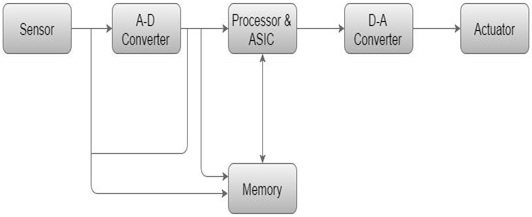EMBEDDED SYSTEMS ARCHITECTURE: In this article, I will discuss embedded systems architecture and basic building blocks of embedded systems. After reading this article you will have basic ideas of embedded systems architecture. As the name suggests, embedded approach something that is connected to some other aspect. An embedded gadget can be the notion of as a laptop hardware device having software program embedded in it. An embedded gadget may be an impartial system or it may be part of a huge system. An embedded system is a microcontroller or microprocessor primarily based gadget that’s designed to perform a particular task. For instance, a fire alarm is an embedded system; it’ll sense most effective smoke.
COMPONENTS OF EMBEDDED SYSTEMS ARCHITECTURE
An embedded system has 3 components:
- It has the hardware.
- It has software program.
- It has an actual real-time operating system (RTOS) that supervises the utility software and offer a mechanism to let the processor run a process as in step with scheduling by means of following a plan to manipulate the latencies. RTOS defines the manner the system works. It units the rules throughout the execution of application software. A small scale embedded device won’t have RTOS.
So we will define an embedded gadget as a microcontroller based totally, software pushed, dependable, real-time managed device.
The below table summarizes some of the most common systems that can make up embedded architectures, and indicates commonly what the elements of a specific structure represent and how these factors interrelate. While it additionally introduces principles to be defined, it additionally demonstrates the huge style of architectural structures to be had to symbolize an embedded system. Architectures and their structures, how they interrelate, how to create an architecture.
THE EMBEDDED SYSTEM MODEL
An expansion of embedded systems architectural structures is used to introduce technical concepts and fundamentals of an embedded device. the emerging architectural equipment (i.e., reference models) had been used as the inspiration for these architectural systems.at the best degree, the primary architectural tool used to introduce the important factors located inside an embedded device layout is what I can consult with as the embedded systems model, shown in below figure.
What the embedded systems architecture model shows is that all embedded systems proportion one similarity at the very best degree; that is, all of them have a minimum one layer (hardware) or all layers (hardware, device software and alertness software) into which all additives fall. The hardware layer consists of all the important physical components placed on an embedded board, whereas the system and alertness software layers incorporate all of the software program placed on and being processed by the embedded gadget. This reference model is basically a layered (modular) illustration of an embedded systems structure from which a modular architectural structure can be derived. Whilst the concept of layering isn’t unique to embedded gadget design (architectures are relevant to all PC structures, and an embedded system is a form of PC system), it is a useful tool in visualizing the possible mixtures of masses, if not hundreds, of hardware and software additives that can be utilized in designing an embedded device.
BASIC STRUCTURE OF AN EMBEDDED SYSTEMS ARCHITECTURE
The below diagram shows the basic structure of the embedded systems architecture.
SENSOR:
It measures the quantities that are physical and converts it to an electrical signal which may be read by an observer or through any electronic tool like an A-D converter. A sensor shops the measured amount to the memory.
An analog-to-digital converter that is used converts the analog signal sent by using the sensor right into a digital signal.
PROCESSOR:
Processors process the records to degree the output and keep it to the memory.
D-A CONVERTER:
A virtual-to-analog converter converts the virtual records fed by using the processor to analog information.
ACTUATOR:
An actuator compares the output given by means of the D-A converter to the actual (anticipated) output saved in it and stores the authorized output.
IMPORTANT OF EMBEDDED SYSTEM ARCHITECTURE
This article makes use of an architectural structures engineering method to embedded systems due to the fact it’s far one of the maximum powerful gear that can be used to recognize an embedded structures layout or to clear up demanding situations faced while designing a new device. What makes the architectural technique so effective is its capacity to informally and quick speak a layout to a spread of people with or without technical backgrounds, even acting as a basis in planning the assignment or certainly designing a device. Because it truly outlines the requirements of the system, an architecture can act as a solid basis for studying and testing the quality of a device and its performance below various situations. Eventually, the diverse systems of an architecture can then be leveraged for designing destiny merchandise with comparable traits, as a result allowing design understanding to be reused, and leading to a decrease of destiny design and development charges.
By the use of the architectural technique in this article, I’m hoping to relay to the reader that defining and expertise the architecture of an embedded gadget is an important aspect of precise gadget design. This is due to the fact, similarly to the benefits listed above:
- Each embedded gadget has an architecture, whether or not it’s miles or isn’t documented, because every embedded system consists of interacting elements (whether or not hard- ware or software program). An architecture by way of definition is a fixed of representations of these factors and their relationships. In place of having a faulty and steeply-priced architecture forced on you through no longer taking the time to define an structure earlier than beginning improvement, take control of the design via defining the architecture first.
- Because an embedded architecture captures diverse views, which can be representations of the system, it is a beneficial device in understanding all of the major factors, why every aspect is there, and why the factors behave the way they do. None of the factors within an embedded device works in a vacuum. Each detail inside a device interacts with some different detail in a few fashion. Without know-how the “whys” at the back of an element’s provided functionality, overall performance, and so forth, it would be difficult to determine how the gadget could behave underneath a spread of instances in the real global.


Delay calculation of pic 16fwith 16 or 8 Mhz crystal oscillator
I want to find the 5Delay calculation of pic 16fwith 16 or 8 Mhz crystal oscillator
I want to find the Delay calculation of pic 16fwith 16 or 8 Mhz crystal oscillator